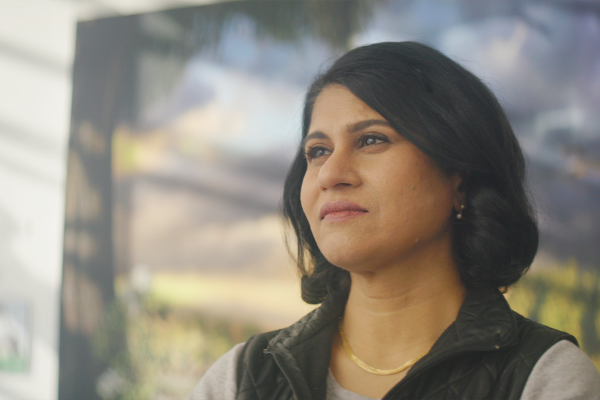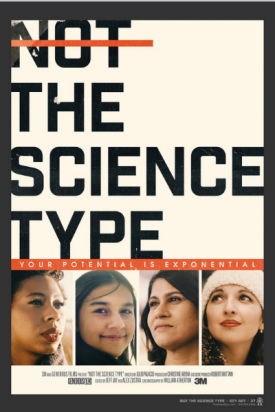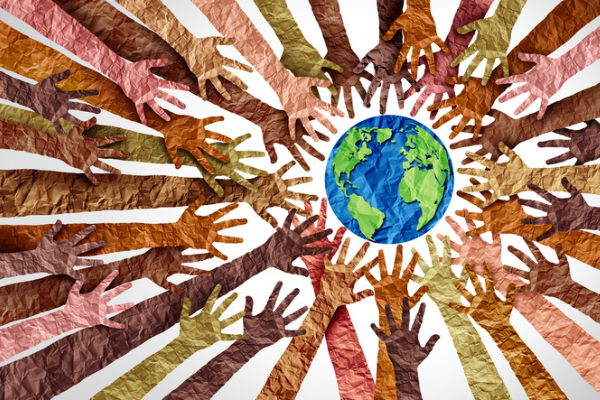By: Jayshree Seth, Corporate Scientist and Chief Science Advocate, 3M

Jayshree Seth is a Corporate Scientist at 3M and leads Applied Technology Development for Industrial Adhesives and Tapes Division. She joined 3M in 1993 after an MS and PhD in Chemical Engineering from Clarkson University, New York, and she currently holds 72 patents for a variety of innovations with several additional pending. Jayshree is a Distinguished Alumni Award recipient from her alma mater REC Trichy India, now NIIT Trichy, where she earned a B. Tech. in Chemical Engineering. Jayshree was appointed 3M’s first ever Chief Science Advocate in 2018 and is using her scientific knowledge, technical expertise and professional experience to advance science and communicate the importance and benefits of science in everyday life. She is also a member of Carlton Society which is the 3M Science and Engineering ‘Hall of Fame.’ Jayshree is the 4th woman and 1st female engineer to be inducted. In 2020, she was awarded Society of Women Engineers (SWE) highest Achievement Award. Jayshree is the author of the book, The Heart of Science – Engineering Footprints, Fingerprints, & Imprints, published by the Society of Women Engineers, and all the sales proceeds go to a scholarship for underrepresented minority women in STEM. She also featured in a docuseries titles “Not the Science Type” that premiered during the 2021 Tribeca Film Festival. Jayshree has two adult children and her husband is also a 3Mer.
Who is the “science type?”? If the Draw-a-Scientist social experiment first conducted in the sixties is any indication, back then, it was certainly a man. Out of the almost 5,000 scientists drawn by the children who participated in the experiment, only 28 drew a female scientist. In recent decades, on average, 28 percent of the children drew female scientists. Interestingly, at age 6, girls draw 70 percent of scientists as women, but by the time they are 16, they draw around 75% of scientists as men, with the number starting to flip at around 10 years of age. Much research has been done on the topic of why many girls and young women do not see themselves or their gender in science careers.
There are many systemic barriers that women who do enter the field still confront as they often have to navigate ‘the onlyness’ along established and entrenched pathways. They encounter systems that often have little reason or motivation to change given the male majority. Also, there are behavioral norms and expectations, skills and styles, tokenism and typecasting that can all seemingly promote gendered barriers, further stacking the system against women and impacting them disproportionately throughout their careers. Adding to the mix, certain evolutionary psychological gender traits and powerful social conditioning, the systemic experiences can lead to lower satisfaction levels and it can chip away at confidence. Intersectionality further compounds these issues.
Scientific fields need adequate representation, not just in order to innovate and solve problems, but also to ensure that we arrive at solutions that work for all. Moreover, if STEM (science, technology, engineering, and math) fields are viewed in a negative light it will certainly dissuade girls AND boys from pursuing, and as a result, the public awareness and appreciation of science can suffer. That, in turn, can lead to loss of funding at all levels.
Science matters to us at 3M; it is what fuels our innovation and is the foundational strength behind our brand. We track the public perception of science annually through a global research project, called the State of Science Index (SOSI), which was first commissioned by 3M in mid-2017. The findings at the time prompted the creation of a new role at 3M called Chief Science Advocate, which I currently hold. It was clear from the results that we needed to advocate for science and foster a global conversation on what the survey revealed each year.
3M State of Science Index (SOSI) is now in its 5th year and the 2021 results reveal that the public agrees girls and women in STEM still face obstacles relating to their gender. Moreover, 7 in 10 people around the world agree that there are negative consequences to society if the science community fails to attract more women and girls. With the pandemic igniting a renewed interest in STEM, we believe that it is a great time to promote diversity and gender equity in STEM.
At 3M, we have a longstanding commitment to science and we are very active across the education spectrum in all the communities we operate in around the world. We invested $41M in STEM support in 2019 and committed $50M to a social justice fund to benefit underrepresented and diverse populations in 2020. And in 2021, as part of our overall commitment to creating greater equity in our communities, and across our business practices and workplaces, 3M set a new global, education-focused goal. We will be creating five million unique STEM and skilled trades learning experiences for underrepresented individuals by 2025 to advance economic equity.
This summer I was honored to be featured in a 3M produced docuseries “Not the Science Type,” inspired by the results of 3M SOSI, featuring four female scientists who are challenging stereotypes as they pursue their chosen STEM fields. The series was created in order to spark a deeper conversation regarding stereotypes about science, and scientists, and their negative impact on STEM diversity, equity and inclusion.

Popular culture archetypes of scientists as dispassionate villains, or maverick heroes, and the nerdy geeks, socially awkward, loner stereotypes are all too often incompatible with the way girls see themselves, and these portrayals serve to lessen the appeal of science itself. These stereotypes also have prejudicial effects on how boys view women in STEM roles when they encounter them in real life. Role models in science careers and adequate representation of women in science curriculum can be effective strategies to combat stereotypes.
With “Not the Science Type” we hope to inform, influence and inspire. The docuseries shows that you don’t have to be a specific race, gender, ethnicity or nationality, you don’t have to be a child who tinkered, and you don’t have to have a degree -- to be the “science type.” You can bring in your interests, shape your roles and pursue your passions - and you can blaze trails with potential that is exponential.
Let’s commit to actively changing the constructs that deter women so we can welcome more diversity in STEM fields. Let’s dismantle the archetypes and shatter the stereotypes that fail to inspire. Let’s stop the tokenism and typecasting that can limit opportunity. 2021’s results of 3M State of Science Index show that the world recognizes diversity can help science achieve more, including greater global collaboration among scientists, more innovative ideas, new and improved approaches to existing research techniques, and more research and innovation to help underserved populations.
Science is critical to the future of humanity. Diversity is critical to science. Gender and racial equity are critical to diversity.
This article has been edited for length and clarity. The opinions expressed in this article are the author's own and do not necessarily reflect the view of their employer or the American Chemical Society.
Copyright 2022 American Chemical Society (All Rights Reserved)






